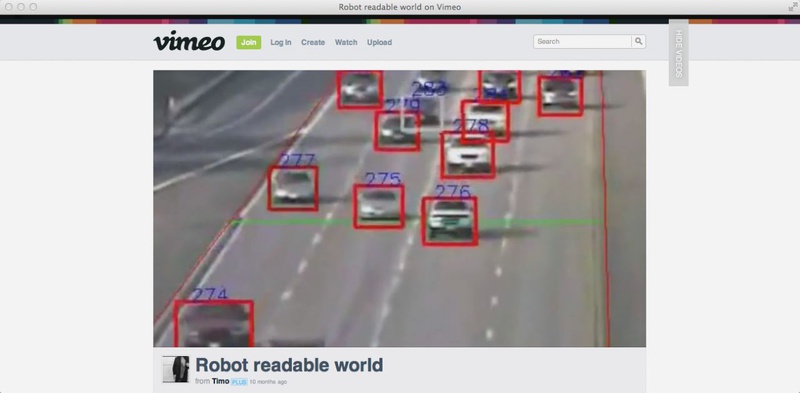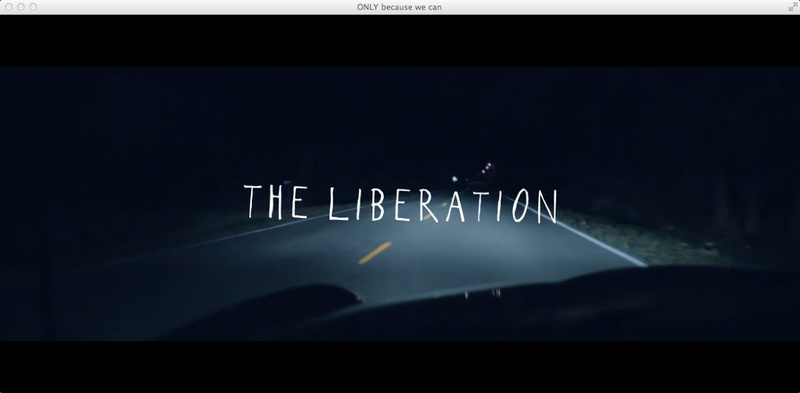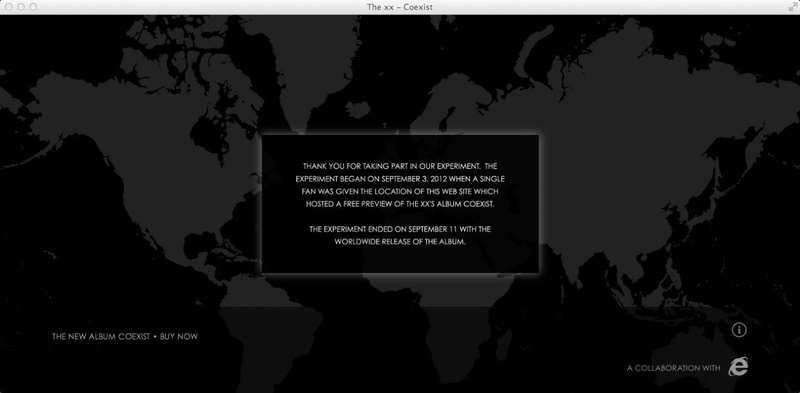Advertising, art’s Siamese Twin.This issue’s digital content was selected by Jan Pautsch, Director Business Unit, Creative Lead at Aperto Berlin. Jan, a native “East Berliner” in a city full of people who have crowded in from outside both before and since the fall of the Wall, chatted to Micha-el Weinzettl in the interview that follows.
L.A.: Hi Jan, can you begin by telling us a bit about your background in fine arts and the East Berlin Punk and New Wave movement of the early 80s, and what I’ve seen described as “the free-spirited attitudes to squatting” in the mid-90s? What kind of work were you creating back then? What was it about?
Jan Pautsch: I was born and raised in East Berlin. The paradigm of a culture of denial imposed by both the state and society provoked resistance in me at a very early age. And it is an attitude that has been my companion right up until the present day. Punk in the east was very much shaped by improvisation and a bid to tap new creative spaces. People were creating everything themselves – their own clothes, music, fanzines, or their very own image of the world and their own value system. The make-your-own-stuff of those days is comparable to today’s DIY and maker movement; back then, however, it was strictly non-commercial and often politically motivated. When the Wall came down, this energy was transformed into what I call “Off Space Occupations,” moves to fill vacant spaces in post-Wall East Berlin with creativity. While studying visual communication at the Kunsthochschule Berlin-Weissensee, I played in a variety of post-punk bands and initiated – under the pseudonym Jan Lilienthal – a number of exhibition projects in vacant properties. In London, I studied Illustration at the Camberwell College of Arts and then went to New York on a DAAD scholarship to study Free Art at NYU. New York, and the influence of my teachers, David Humphrey and Michael St. John, had a big impact on my artistic attitudes, changing everything once and for all. I was suddenly out of the East Berlin microcosm and right at the heart of the global discourse. In the video “Turning Tricks,” I rotate around myself like a dervish in an endless loop to minimalist sounds. It was through techno that I rediscovered Berlin for myself.
L.A.: What kind of artists/artistic movements did you admire back then?
Jan Pautsch: In the mid-90s, I was strongly influenced by an essay of American art critic Dave Hickey. “This Mortal Magic” takes the example of the magic shows of Siegfried and Roy to illustrate that the act of making things disappear has a far greater appeal than that of proving that they exist. Hickey describes our yearning for the apparently impossible as “Songs of Mortality sung by the Prisoners of Time.” It was in direct correspondence with this text that the drawings, objects and videoloops I was making at that time were created. During this same period, I was also very much into Richard Prince. His visual statements and texts continue to be of relevance for me today.
L.A.: In the early 90s, it could still be slightly risky for someone in an Armani suit to show up in places like Kreuzberg. People might have thrown rocks at him and all that he represented to them. What is your personal take on the way Berlin has changed in the past 20 years?
Jan Pautsch: “Berlin is like a punk in a suit.” This quote from fashion designer Dirk Schönberger sums it up in a nutshell. Over the past 20 years, Berlin has not changed that much in terms of substance. The city has always been ugly and poor. Improvisation and creativity were the things most in demand. Having money was neither sexy nor really necessary. That is currently changing quite radically. The city now runs the risk of losing its creative, uncontrolled spaces.
L.A.: How did your interest in advertising come about? Isn’t it rather unusual given the background you come from?
Jan Pautsch: Advertising is art’s Siamese twin. Both disciplines operate using the art of persuasion and seduction, and employ the narration method to do so – yet each of them has a diametrically opposed aim. Art and advertising interpenetrate and feed off each other. A new generation of creatives are proving that introspection and communication definitely are compatible. They are hybrids. The internet is their canvas. What is more, marketing will in future be under greater pressure to exploit artistic strategies. An open, experimental and inquisitive view of things will become a differentiating factor in a globalized world driven by data.
L.A.: What was the digital arena like when you first got started? What are some of the changes the whole field has gone through since then?
Jan Pautsch: At the end of the 90s, I discovered for myself the web and the Flash tool as an experimental space. The first commissions I received were to do web pages for artists like Herbert Grönemeyer or brands such as Bacardi Martini. Excessive use of 3D and videos enabled us to test the capacitive boundaries of the medium to the very limit. I was completely absorbed by the animation and presentation potentials of Flash, and these later served as my springboard into the world of agencies and the development of campaigns for major brands. Working together in interdisciplinary teams is something I felt to be a way of breaking free of the cliché of the lone artistic genius working on his own, offering me an alternative vision to that existence. Since then, the web has changed a lot – and, with it, the areas in which I work. What hasn’t changed is my excitement about the evolution of digital communication and my passion for collaborative creation.
L.A.: You became Creative Director at argonauten G2 in 2007. While there, you worked for international brands such as Allianz Group, Coca-Cola, Volkswagen, La Prairie, Pernod-Ricard, Procter & Gamble, and the Berlin Philharmonic Orchestra. What were some of your personal favorites among these projects – and can you describe them for us?
Jan Pautsch: At the time, argonauten G2 was the digital lead agency for Coca-Cola Deutschland. We devised campaign platforms such as “We all speak football” for the FIFA World Cup 2006, as well as the “Coke side of life” and “Fanta play.” These were platforms that, even back then, were heavily into gamification aspects and social participation. A very sophisticated project, one involving eighteen months of development, served as global internet design framework for the Volkswagen brand. Yet one of my favorite projects is the „Digital concert hall“ for die Berlin Philharmonic, a global live concert streaming platform boasting CD quality sound and HD video. The interface and motion concept for the Digital Concert Hall was inspired by a Max Frisch quotation on the architecture of the Berlin Philharmonie: “Guided by the spirit of the place as well as the architect’s wit.”
L.A.: In 2011, Scholz & Friends Berlin offered you the Digital Creative Lead in their first truly integrated unit. What were some of the challenges you were initially faced with there? And how truly “integrated” can a Digital Lead become in a formerly “traditional” agency?
Jan Pautsch: Which tricks can an old dog learn? ;-) I was very happy to take on the assignment but soon discovered that the changes traditional agencies face are more cultural in nature. One single individual is barely able to implement this process of cultural transformation alone. It is, after all, not only about knowhow – it is also about understanding the medium. Knowhow can be learned, yet developing an understanding requires not only time but also a desire to collectively explore the new. I respect the agency’s high creative standards and gathered some valuable experience while there. At the same time, however, I realized that my real home is in digital culture.
L.A.: Is there any digital/interactive work that struck you as particularly groundbreaking in 2012?
Jan Pautsch: For me, the Nike+ FuelBand is a fantastic example of how to fuse innovative technology and functional product design to create an entirely new category. A cool fashion accessory with motivational added value, so to speak.
L.A.: How do you get your inspiration for your work? What inspires you in the first place?
Jan Pautsch: My Twitter feed fires me up with fresh ideas every day. And … I continue to take a keen interest in art. I was in London a few weeks ago to check out a few exhibitions. “The Woolworths Choir of 1979,” a video installation at the Tate by Elizabeth Price, Turner prizewinner 2012, impressed me. At Somerset House, I saw Tim Walker’s “Story Teller” and, at the Barbican, I caught the “Rain Room” by Random International. These are the moments from which I draw my creative energy. Additionally, I love playing visual ideas ping-pong with fellow artists. I try to give some space to these projects on my site at ThisMortalMagic.com.
L.A.: You have won lots of awards at festivals all over and you have also sat on award juries. Is it more difficult for juries to judge digital work than traditional media such as print and film? It is surely more time-consuming when judging, right?
Jan Pautsch: There is no clear dividing line between digital and non-digital. Award submission categories and jury structures are finding it hard to accept this fact. What is more, digital communication is becoming more diverse and campaigns more complex. The submissions film may be a proven means of getting a quick initial overview of the idea and campaign mechanics, yet its over-the-top form of narration is something that should be taken in small doses only. To come to a really fair assessment, you need to try out the apps and tools yourself. In some cases, this is incredibly time-consuming. The Lovie Awards, for example, are taking a new approach. A pool of experts rate a rotating stream of work. You jury just as much work as you are willing and able to.
L.A.: Can you tell us a bit about the criteria you used when selecting the digital work showcased in this issue of Lürzer’s Archive?
Jan Pautsch: Over the past weeks, I myself have used the campaigns, apps and experiments selected for this issue more than once and, in some cases, pretty often in fact. They either redefine the borders of the medium – or actually break these down. They constitute new and innovative UI/UXs and business models, take bold gambles, or question and hone our vision of a heterogeneous networked world that is changing at an accelerating pace.
L.A.: You are also Director Business Unit, Creative Lead at Aperto Berlin, a digital full-service agency. Can you tell us a bit about Aperto and your work there?
Jan Pautsch: Aperto is the most “digitized” of Germany’s owner-managed advertising agencies. We team creativity with technology. Working from a former industrial facility in Berlin-Mitte, we combine all disciplines – strategy, classical advertising, mobile, online marketing, PR, social media, monitoring, and branded entertainment,right through to software development – under a single roof. Through our offices in Switzerland, Dubai and Beijing, we are able to roll out creative campaigns globally. Together with my partner Fabian Link, I am currently setting up a new unit focusing on automotive. The digital DNA of Aperto forms the basis for a constructive, collaborative climate and for integrated projects that cut across the different groups inside the agency. One expression of this is DECODER, an open and generative event format that I launched at Aperto. DECODER stands for the deciphering of creative patterns, communications systems, and methods of working. It is about the clashing of different corporate worlds and cultures. The DECODER workshop with Eike König (Hort) focused not on results but on a question: How does one approach the business of tackling a task or assignment in open, unconventional manner? And, under the direction of Berlin architect Van Bo Le-Mentzel, houses measuring one sqm were developed, each with individual usage concepts. A nice spin-off of this workshop: those attending are forced to work across team borders, to interact with one another, and – far removed from their computer screens – to create a tangible product together, one that is actually “touchable.”
L.A.: One of your clients there is Volkswagen, which I read is your “favorite” brand. How come? And what are you currently working on?
Jan Pautsch: “If a Product is a Design Product, if the three major Elements, Quality, Functionality and Aesthetics are perfectly combined, Advertising becomes just an additional Tool.” This is what head Volks-wagen designer Walter Maria de Silva says about the Volkswagen models. I, however, feel that a perfectly designed and perfectly functioning product needs a story that is told no less perfectly if it is to find its way to consumers. Being a brand that is driven by innovation, and featuring a radically simple design system, Volkswagen thus acts as the perfect breeding ground for this. Our colleagues at Greenkern (strategy agency and Aperto affiliate) recently won the pitch for the global Volkswagen account to tie in with the FIA World Rally Championship. We are supporting them in their efforts to devise the first transmedia storytelling case from the house of Volkswagen. Priority will be given to web and mobile, with social media apps, webisodes, virals, and a game being blended with classical communication. The “Rally the World” campaign will launch as soon as the rally championship gets underway in mid-January.
L.A.: What advice would you give a student who wants to embark on a career in the fields of digital / interactive / advertising?
Jan Pautsch: The digital world is amazingly diverse and correspondingly demanding in terms of the expertise required. Tomorrow’s experts need to be T-shaped. They must be able to build knowhow vertically top-down, and to collaborate in interdisciplinary fashion at the horizontal level. Above all, however, they will be people who have a mind of their own and the power to retain that faculty. The industry is changing at breakneck speed. Agencies are becoming places of alchemy at which joint research into the future is being conducted. Be a part of this richly layered experiment – and don’t let yourself be thrown off course by the shortlived monothematic startup hype!.

















